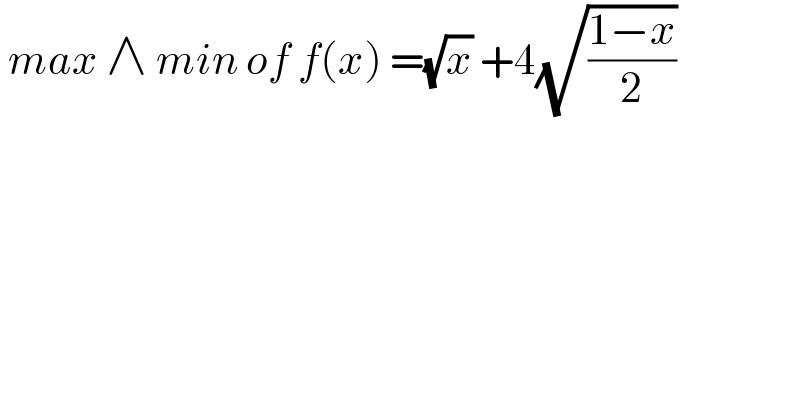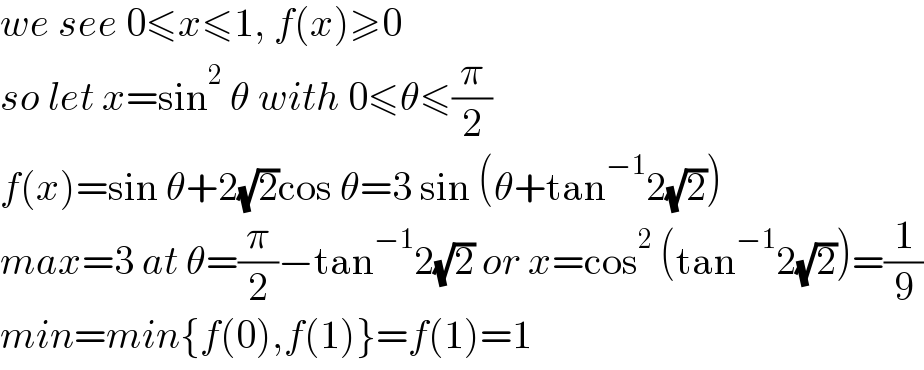Question Number 157116 by cortano last updated on 20/Oct/21

$$\:{max}\:\wedge\:{min}\:{of}\:{f}\left({x}\right)\:=\sqrt{{x}}\:+\mathrm{4}\sqrt{\frac{\mathrm{1}−{x}}{\mathrm{2}}} \\ $$
Commented by cortano last updated on 20/Oct/21

$${without}\:{derivative} \\ $$
Commented by mr W last updated on 20/Oct/21

$${max}=\mathrm{3} \\ $$$${min}=\mathrm{1} \\ $$
Answered by mr W last updated on 20/Oct/21

$${we}\:{see}\:\mathrm{0}\leqslant{x}\leqslant\mathrm{1},\:{f}\left({x}\right)\geqslant\mathrm{0} \\ $$$${so}\:{let}\:{x}=\mathrm{sin}^{\mathrm{2}} \:\theta\:{with}\:\mathrm{0}\leqslant\theta\leqslant\frac{\pi}{\mathrm{2}} \\ $$$${f}\left({x}\right)=\mathrm{sin}\:\theta+\mathrm{2}\sqrt{\mathrm{2}}\mathrm{cos}\:\theta=\mathrm{3}\:\mathrm{sin}\:\left(\theta+\mathrm{tan}^{−\mathrm{1}} \mathrm{2}\sqrt{\mathrm{2}}\right) \\ $$$${max}=\mathrm{3}\:{at}\:\theta=\frac{\pi}{\mathrm{2}}−\mathrm{tan}^{−\mathrm{1}} \mathrm{2}\sqrt{\mathrm{2}}\:{or}\:{x}=\mathrm{cos}^{\mathrm{2}} \:\left(\mathrm{tan}^{−\mathrm{1}} \mathrm{2}\sqrt{\mathrm{2}}\right)=\frac{\mathrm{1}}{\mathrm{9}} \\ $$$${min}={min}\left\{{f}\left(\mathrm{0}\right),{f}\left(\mathrm{1}\right)\right\}={f}\left(\mathrm{1}\right)=\mathrm{1} \\ $$
